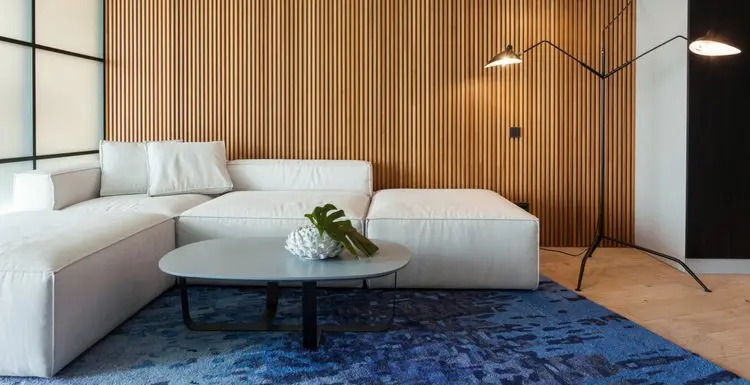Whether you want shiplap or reclaimed wood, there are plenty of wood wall panel styles to choose from. Here is everything you need to know about wood paneling.
The Different Types of Wood Wall Paneling
There are many types of wood wall paneling that will add a charming accent to your wall(s). Below are the most common types of wood wall paneling.
1. Raised Paneling
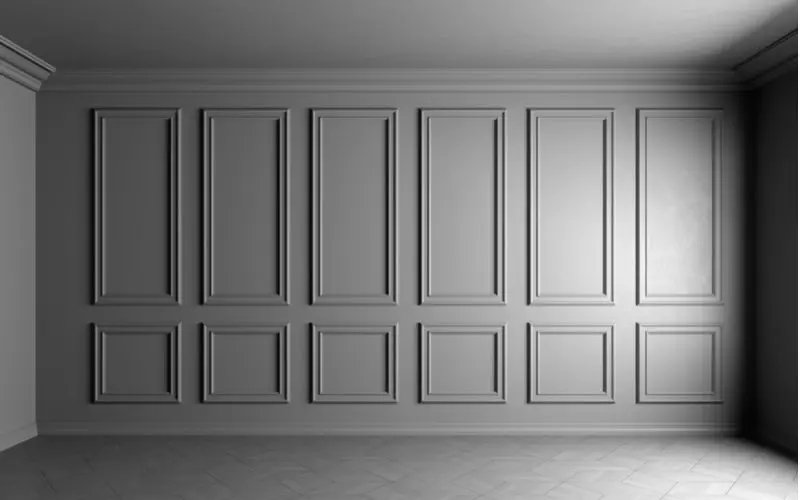
Kutcenko/Shutterstock
Raised paneling was popular in the 17th century to add insulation to a home. It will feel as if you stepped into a colonial-style home with raised wood paneling.
You can either opt for wainscoting the lower third of your wall or use raised paneling all over for an elegant accent wall. You will connect the beveled wood panels to the top and bottom rails when using raised paneling.
This type of paneling is often more expensive than other wood wall paneling, so you can expect to pay anywhere from $10 to $30 per square foot.
Though this style can be pricier than other options, its sophisticated appearance is well worth it. Many people use this type of wood paneling to add a little flair to a dining room, den, or any room in which they want a bit more elegance.
2. Tongue and Groove
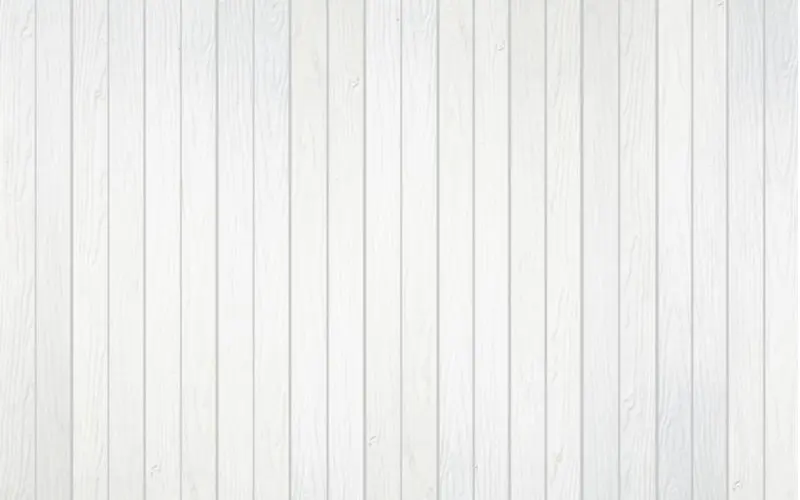
Ball Lunla/Shutterstock
Tongue and groove paneling came to fame in 1877 and became popular around the 1970s. This type of wood paneling is making a big comeback and can give any room a sleek, clean-looking wall.
The biggest pro of choosing tongue and groove wood paneling is the ease of installation. The wallboards are uniform and easily allow you to create spacing between each plank.
Unlike other types of wood wall paneling, you can fit the boards together like a jigsaw puzzle. No matter what type of style your home is, tongue and groove paneling will fit right in.
There are multiple lengths to choose from. They are also relatively inexpensive; they’ll only cost you around $2–$3 per square foot.
3. Shiplap
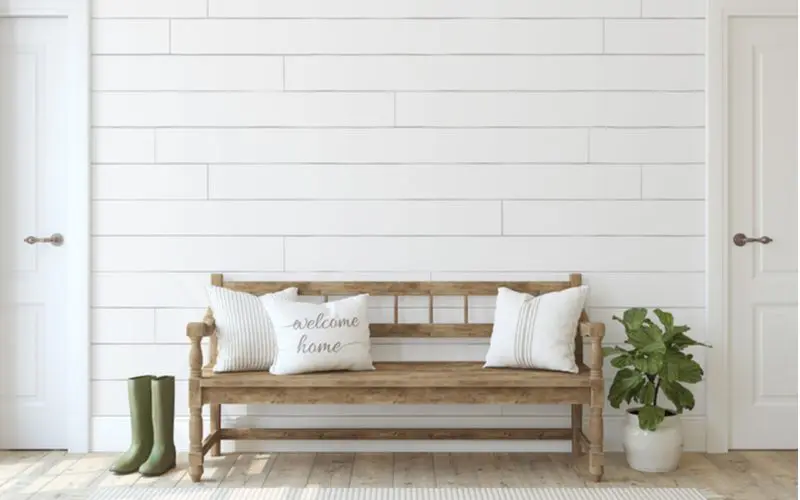
Tr1sha/Shutterstock
Shiplap is one of the most popular wood wall panelings used in homes today. In its early popularity, most people would use this style only on a portion of the wall. Now, it is common to see it from top to bottom.
This type of paneling is similar to tongue and groove, with the only difference being an even tighter fit. The planks easily fit together with the tongue and groove because of their unique cuts on the top and bottom.
Shiplap planks consist of boards with L-shaped cuts that fit like a glove with one another. Not only do the crisp lines add texture to the room, but they are more durable than drywall alone.
However, it is crucial to ensure you install this wall paneling correctly. If not done right, the wooden planks may warp over time and will need fixing eventually.
4. Board and Batten
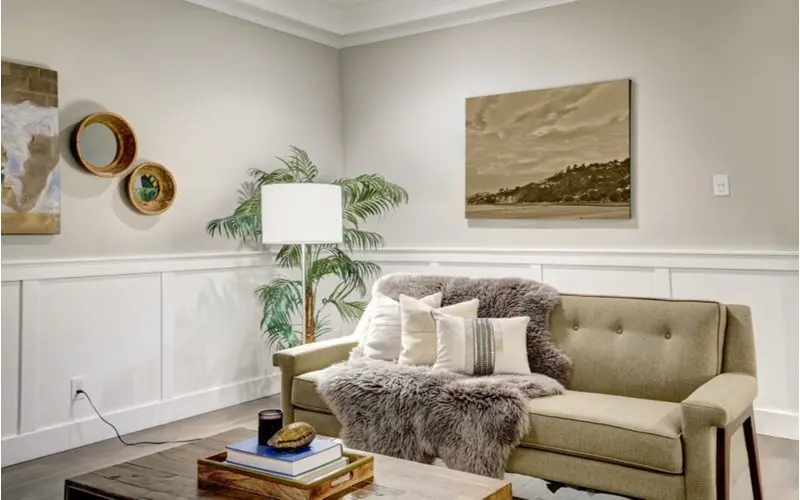
Artazum/Shutterstock
Board and batten were initially used as exterior side paneling on homes. Nowadays, you can find plenty of houses that use the board and batten style inside the house.
Depending on the finish, you can make this type of paneling look as modern or rustic as you like.
With board and batten paneling, you can easily add a sophisticated look and more dimension to your home. Board and batten paneling has a pattern of vertical molding planks, referred to as battens.
The only downside of opting for board and batten wood wall paneling is the higher cost. Though it is typically less expensive than other styles, like raised paneling, you can still expect to pay up to $10 per square foot.
5. Reclaimed Wood
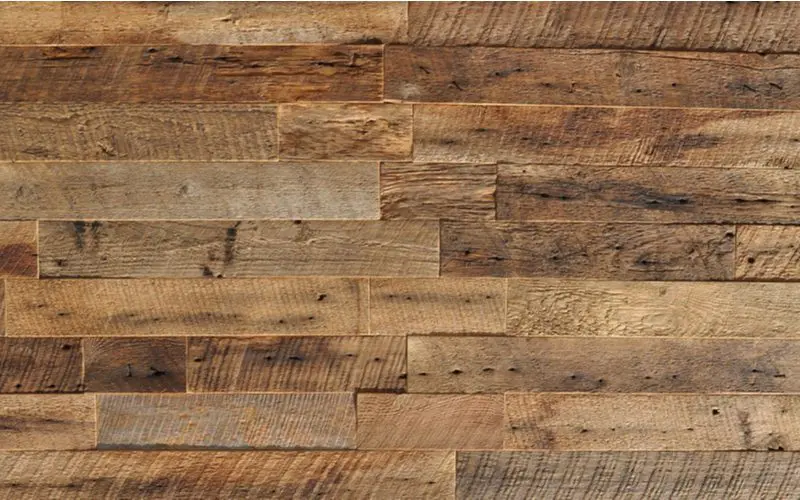
7 Company/Shutterstock
Reclaimed wood paneling gives your home an authentically rustic appearance. Unlike many other types of wood wall paneling, reclaimed wood has unique characteristics.
Each plank varies from the next and will have dents, knot holes, and holes from nails. This wood wall paneling style comes in a variety of stains, all of which offer you an aged look that is unseen in newer techniques.
Not only is it gorgeous, but reclaimed wood is also more environmentally friendly since it comes from older trees. Because older lumber needs to undergo additional processes, reclaimed wood wall paneling is often a bit pricier.
Since it can be a little costly, some people will use distressing techniques to give newer planks the look of reclaimed wood.
6. Beadboard
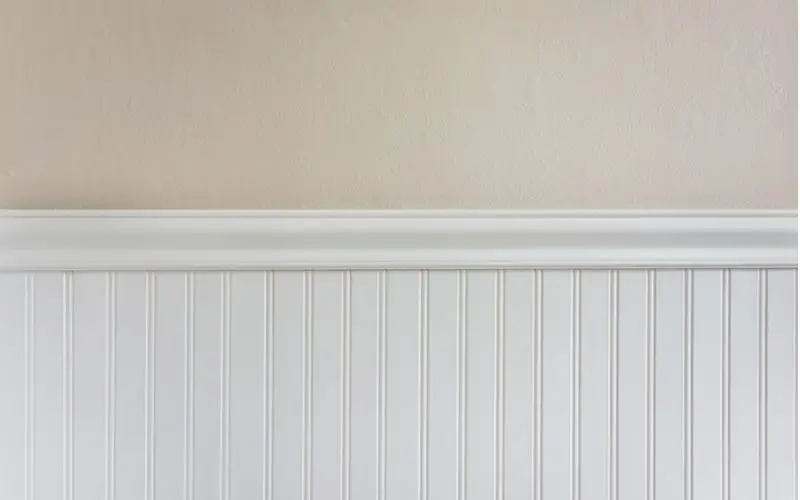
Brett Taylor Photography/Shutterstock
Beadboard wood wall paneling runs vertically on your wall and contains a groove between each “plank.” It has a stylish, rustic look that adds coziness to your room.
Depending on the look you’re going for, you can use beadboard wall paneling on either part of the wall or the entirety of it. Beadboard paneling comes in two styles: tongue and groove and sheets.
The tongue-and-groove style of beadboard allows you to easily piece it all together.
With sheets, you install them using nails or construction adhesive. The price of beadboard planks will vary depending on the material. For instance, installing natural wood will be more costly than opting for MDF.
7. Flat Paneling
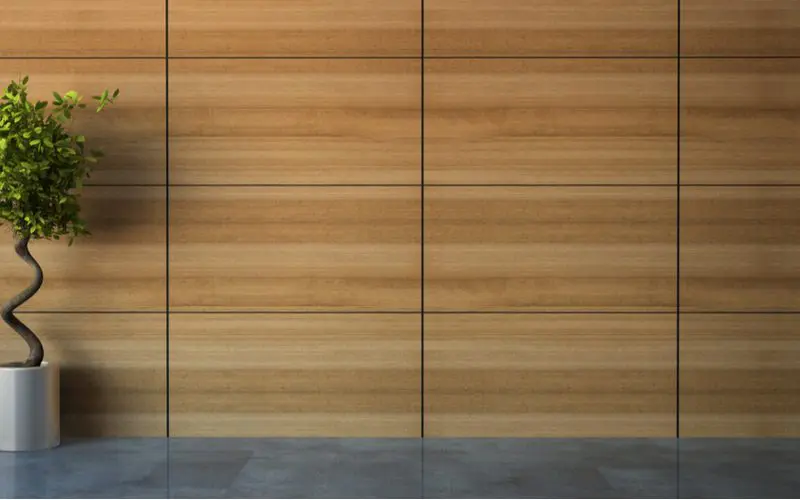
Berg Bmitry/Shutterstock
As the name suggests, flat paneling offers a clean, smooth look. There are no grooves with flat paneling, though there is a line between the boards. Depending on your personal preference, you can choose to leave the seams open or cover them.
This type of paneling is excellent for those who want to add some character and elegance to their room while keeping the design modern. Flat paneling is in the mid-price range, typically costing around $5–$10 per square foot.
8. Plank Wall
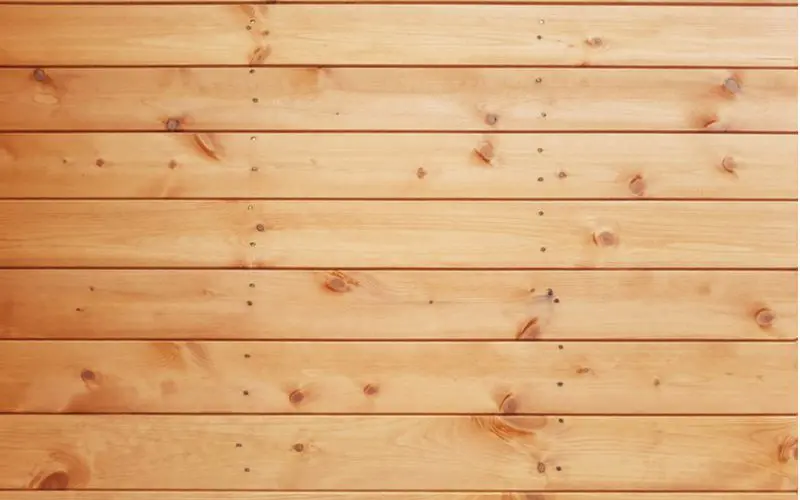
Shakarn Puttarnu/Shutterstock
Plank wood walls are an excellent option to add a rustic touch to a room. This type of wood wall paneling adds a lot of texture to your walls. You can opt for reclaimed wood or manually distressed wood that gives it an older look.
With plank wall paneling, you can easily personalize it to fit your design needs. You can install the wood planks horizontally, vertically, or any other pattern you like.
Though personalization is easy, configuring the correct spacing and setting up the design can be challenging. To simplify the process, you can buy pre-cut planks that are perfectly sized.
Things to Consider When Choosing Wood Wall Paneling
When choosing the right type of wood wall paneling for your house, there are a few factors you need to consider.
- What does your budget look like? Wood wall paneling varies in cost, so set your budget before making any decisions.
- Are you going to hire out or do it yourself? Many DIYers find that doing the wall paneling themselves can be a fun project. However, keep in mind if you will be able to work around the windows, doors, and other obstacles.
- Where will you purchase the materials? A couple of options include lumber yards or home improvement stores.
Frequently Asked Questions
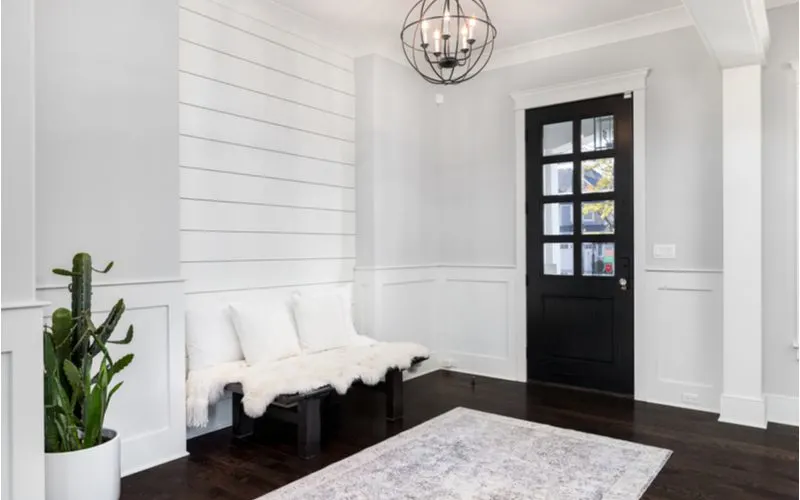
Hendrickson Photography/Shutterstock
Here are some of the most common questions about the types of wood wall paneling:
What Wood is Best for Wall Paneling?
MDF is commonly used when installing wood wall paneling and can sometimes be more durable. However, some people would prefer to have natural wood wall paneling. Either works great as long as it is properly installed.
Is Wood Paneling Out of Style?
When thinking of wood paneling, you may think of your parents’ or grandparents’ house growing up. However, vintage interior design is making a big comeback, and this includes wood wall paneling. You can easily modernize wood paneling or keep its vintage, rustic look.
Should You Paint Wood Paneling?
Wood paneling gives homes a cozy feeling. However, dated or damaged wood wall paneling can remove some of that effect. Removing and replacing the wood planks can be pricey, so you can paint it to bring it back to life without spending a fortune.
What is Fancy Wood Paneling Called?
Raised paneling is often the type of wood paneling considered to be fancy. It has an overall elegant appearance, making any room feel regal.
What is the Difference Between Board and Batten and Wainscoting?
Wainscoting was popular in the 18th century to add an insulated barrier to part or all of your walls. Board and batten is a specific style that you may use to create this coverage.
How Do You Make Wood Panel Walls Look Good?
There are multiple ways to ensure your wood panel walls look precisely how you like. Ensure you installed the wooden planks correctly, fill any gaps to your liking, and choose the type of wood and style of wood wall paneling that suits your needs. When in doubt, hire a contractor rather than do it yourself for the first time.
So, What Are the Types of Wood Wall Paneling?
There are multiple types of wood wall paneling that suit just about every person’s unique needs and tastes. For a regal look, you may like raised paneling.
If you want to add a rustic element to a room, you can’t go wrong with reclaimed wood paneling.
Before you decide which type of wood wall paneling to go with, consider the cost, the type of wood you’d prefer, and if you want to hire it out.

